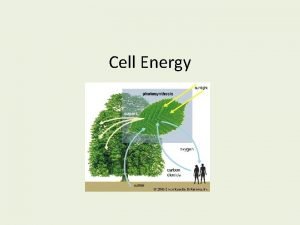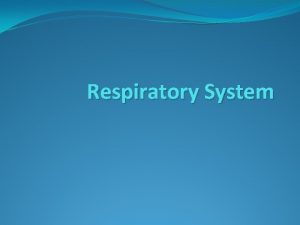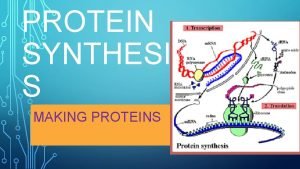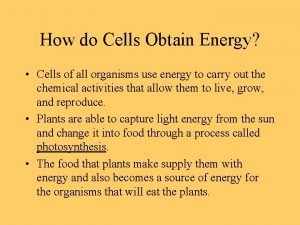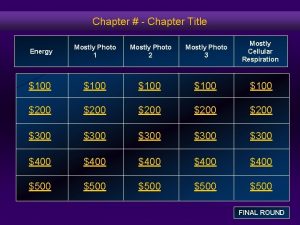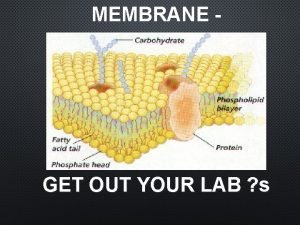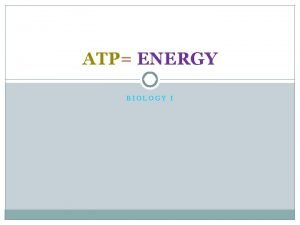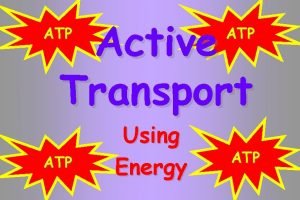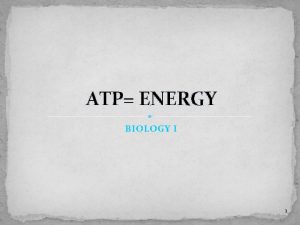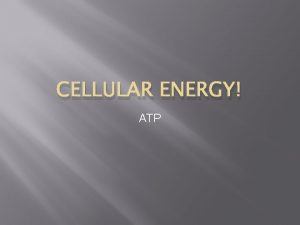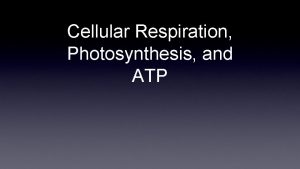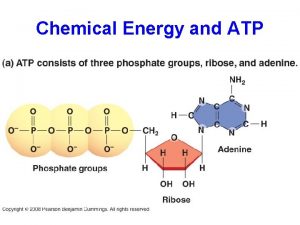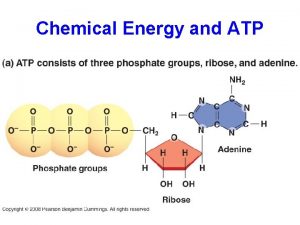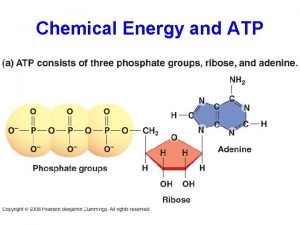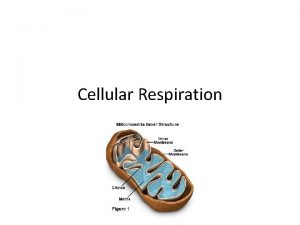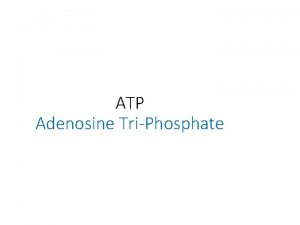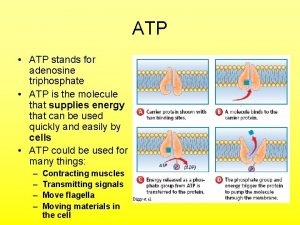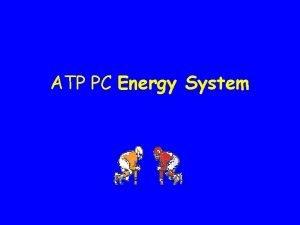ATP is Cell Energy Why do Cells need













- Slides: 13

ATP is Cell Energy

Why do Cells need Energy? • ATP powers most of the energyconsuming activities of cells, such as: Synthesis reactions. Examples: – joining transfer RNAs to amino acids for assembly into proteins – synthesis of all macromolecules – -photosynthesis – Active transport like sodium potassium pumps and endo and exocytosis – Cell reproduction

Why do Cells need Energy? • nerve impulses • adding phosphate groups (phosphorylation) to many different proteins, to alter their activity in cell signaling. • muscle contraction • beating of cilia and flagella (including sperm)

Using Cell Energy • When the third phosphate group of ATP is removed by hydrolysis, free energy is released. ATP + H 2 O → ADP + Pi + energy • ADP is adenosine diphosphate. • Pi is inorganic phosphate

Making Cell Energy ADP + Pi + energy→ ATP + H 2 O • requires energy • Energy comes from chemical bonds in food or from photosynthesis • occurs in the cytosol by glycolysis • occurs in mitochondria by aerobic cellular respiration

Recharging the Cell Battery ADP ATP Energy Adenosine diphosphate (ADP) + Phosphate Partially charged battery Energy Adenosine triphosphate (ATP) Fully charged battery

Have your Cell Energy and Eat it, too! LAB

Materials • 1 large marshmallow =ribose • 1 gummy bear= adenine • 3 small white marshmallows = inorganic phosphate groups • 3 regular toothpicks= covalent bonds • 1 colored toothpick= high energy bond

Procedure • Place 2 toothpicks on opposites sides of your RIBOSE • Connect one side with your adenine • One the other side, connect one phosphate • You now have AMP-> adenosine monophosphate

Procedure 2 • • Add 1 toothpick to other side of phosphate You now have ADP adenosine diphosphate Add 1 toothpick to other side of phosphate Add the colored toothpick to other side of the 2 nd phosphate • You now have ATP-> adenosine triphosphate

Procedure 3 • The colored toothpick represents the high energy bond between the two end phosphates that the important source of energy in ATP

ANALYSIS • Why is one toothpick a different color? • Write out the reaction showing ATP being used • Write out the reaction showing ATP being recharged • List at least 3 ways ATP can be used in cells • How do you make/recharge ATP?

Eat your ATP to make some more!
 Why does a cell need energy
Why does a cell need energy Why do cells need oxygen?
Why do cells need oxygen? Why do we need cells
Why do we need cells How do cells obtain energy
How do cells obtain energy Organelle trail
Organelle trail Pictures
Pictures Fermentation enables glycolysis to continue under
Fermentation enables glycolysis to continue under What compounds do cells need
What compounds do cells need Plants cells _________ water and start to _w_ ___ ___ ___.
Plants cells _________ water and start to _w_ ___ ___ ___. Paranasal sinus at birth
Paranasal sinus at birth Papillary duct of bellini
Papillary duct of bellini Thyroid parafollicular cells
Thyroid parafollicular cells Somatic cells vs gametes
Somatic cells vs gametes Somatic cells vs germ cells
Somatic cells vs germ cells
